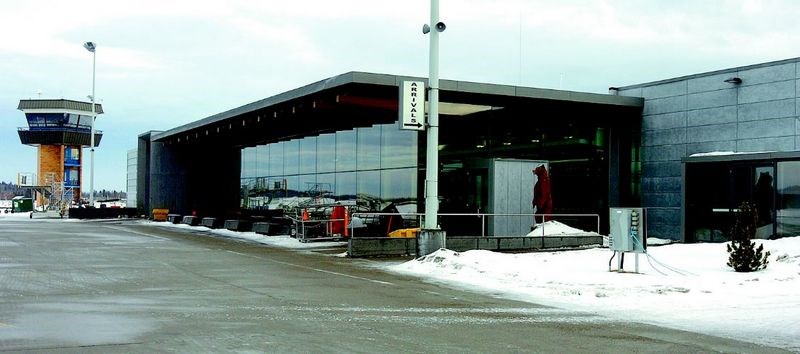A $2-million fuelling-facility meant to improve the Prince George Airport's chance of attracting air cargo traffic is expected to be completed two months later than scheduled.
"The delay is frustrating, but not material in the long run," said Prince George Airport CEO John Gibson.
The project was originally expected to be completed in February, but now is likely to be finished in May, said Gibson. That's because the ground froze before the concrete foundation and pad was poured. Gibson added that, if the winter weather is mild, it may be possible to shave a month off the scheduled completion.
However, the fuelling facility will be completed by the peak air-cargo season which runs from August to December. "We have a hard focus on getting infrastructure finished, then getting carriers to buy into it," said Gibson.
Another project, a $2-million air cargo cross-dock facility, is also scheduled to be completed next year, but it is the fuelling facility that is critical to attracting large air cargo planes, said Gibson.
The fuelling "farm" will not only be capable of handling up to six jumbo-size aircraft a day, but will help drive down the price of fuel, a critical element in making the Prince George Airport a competitive stopover for cargo planes. Gibson said the airport has been told by prospective customers that they need to bring their jet fuel price down.
Gibson said fuel pricing has become more critical because of the global recession and the rise of the Canadian dollar to near par from 65 cents to the U.S. currency.
He said he does not expect to see air cargo flights into Prince George until the fuelling facility is complete, although the airport is in detailed discussions with five Asian carriers.
Prince George-based Sands Bulk Transport, which is building the 600,000-litre fuel facility, is responsible for the entire cost. Based at the BCR industrial site, Sands Bulk Transport will be able to unload less-expensive fuel brought in by rail, and truck it to the fuel facility where a number of users can store fuel, including Sands itself, an air cargo fuel broker or air cargo carriers.
The cross-dock facility, scheduled to be complete by September, will allow cargo to be loaded and unloaded from any planes that land here.
The Prince George Airport completed a $36-million runway expansion in 2009 with the help of the federal and provincial funding, an effort meant to capitalize on Prince George's strategic position on the efficient circumpolar route between North American and Asia.
Now the third-largest runway in Canada, the runway is capable of landing the largest cargo aircraft.
So far, though, the airport has only been able to attract one cargo plan, a Boeing 747, to land at the airport.
Just as the runway was being completed, a global recession hit, severely impacting air cargo business. Air cargo experienced a 10 to 15 per cent drop, its worst decline in two decades.
The long-term prognosis for air cargo is robust, however, with analysts expecting business to triple by 2030.
Recently, Boeing updated its World Air Cargo Forecast, saying traffic rebounded beginning in Nov. 2009 and continued through 2010. Boeing forecast that world air cargo traffic is expected to regain its 2007 peak by the end of the year.
"Economic activity - world gross domestic product - is the key driver of the air cargo market," said Boeing senior official Jerry Allyne.
"Following the recession and a year of recovery, world economic growth is forecast to average 3.2 per cent over the next two decades," he said.



